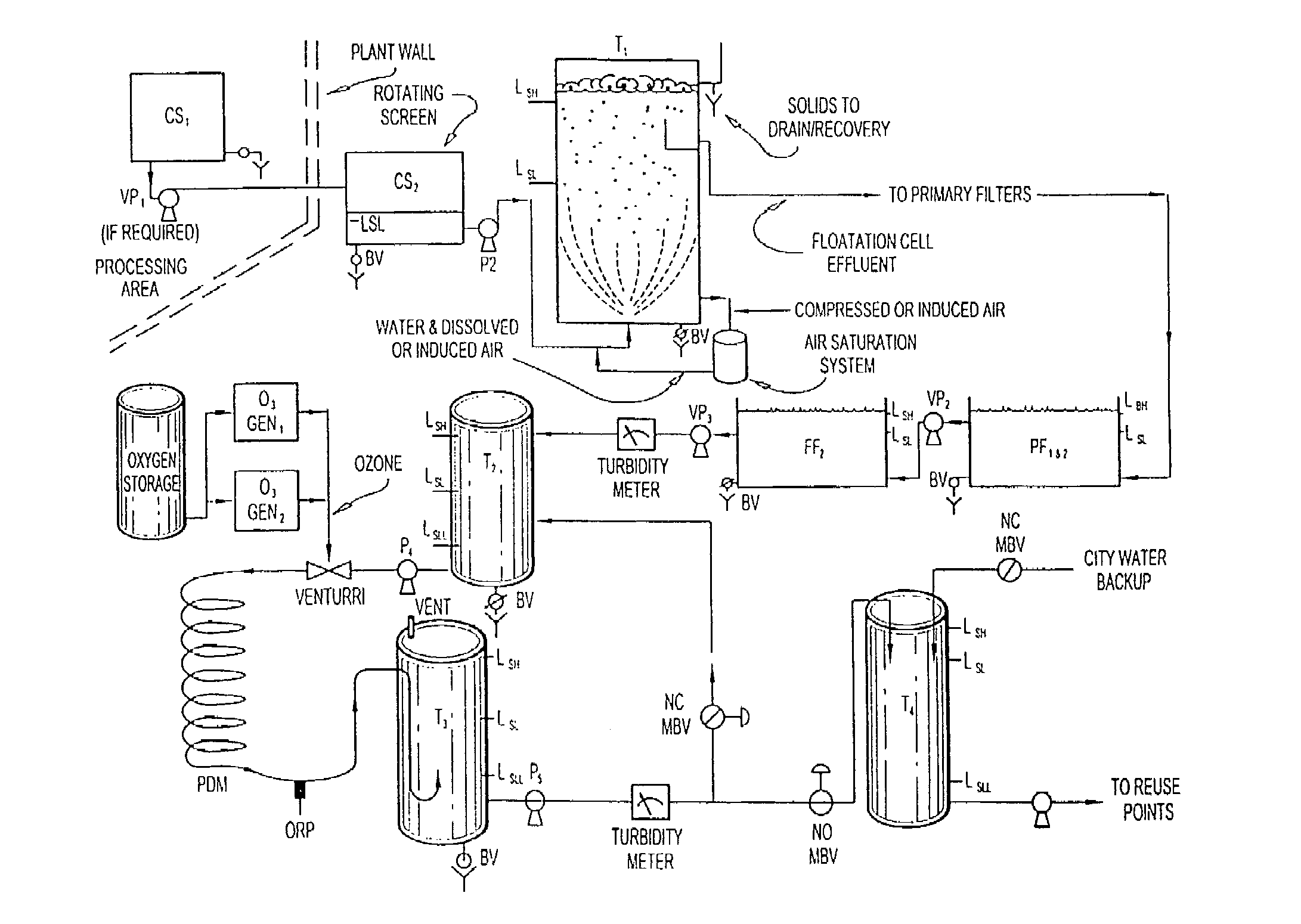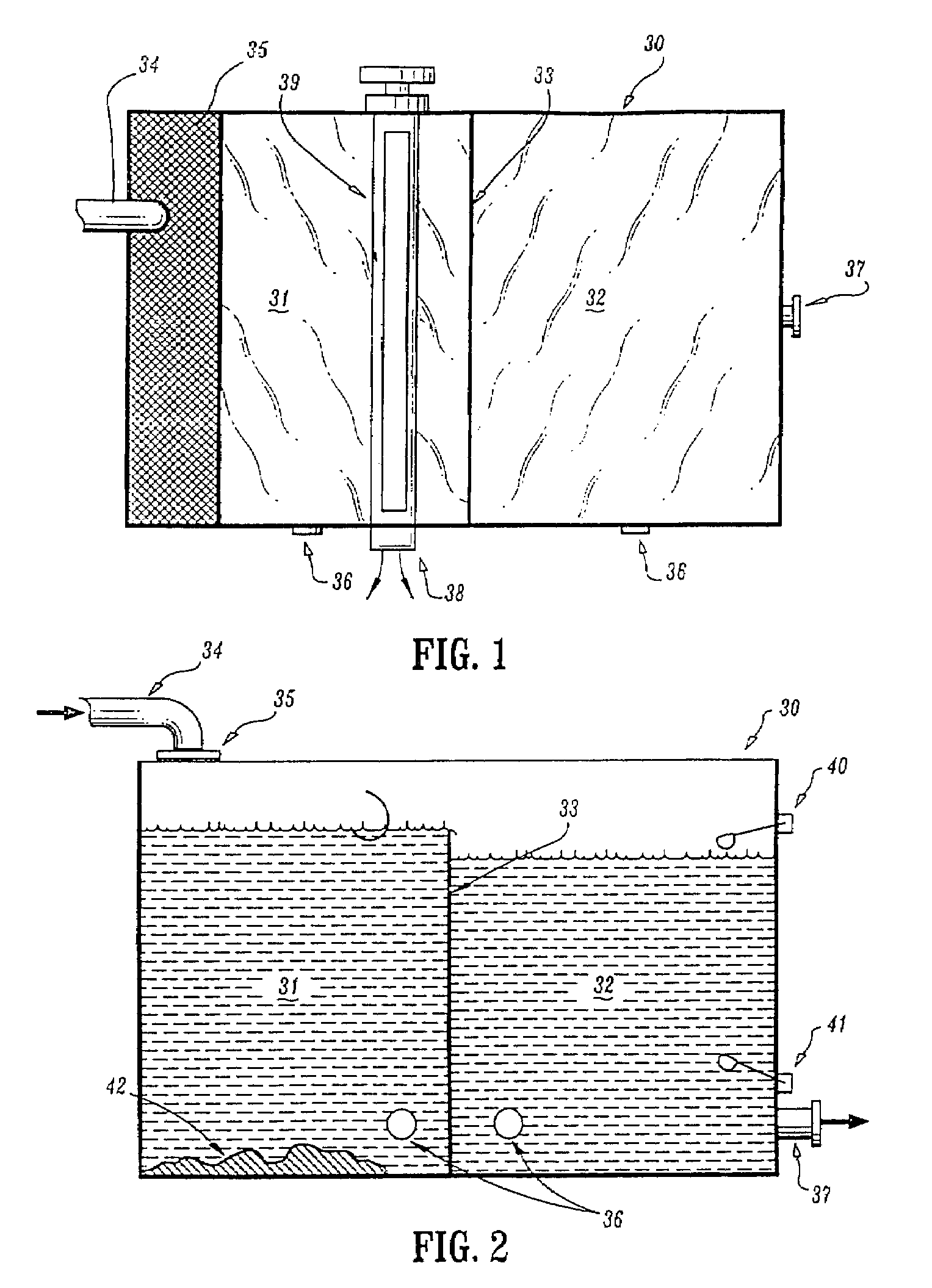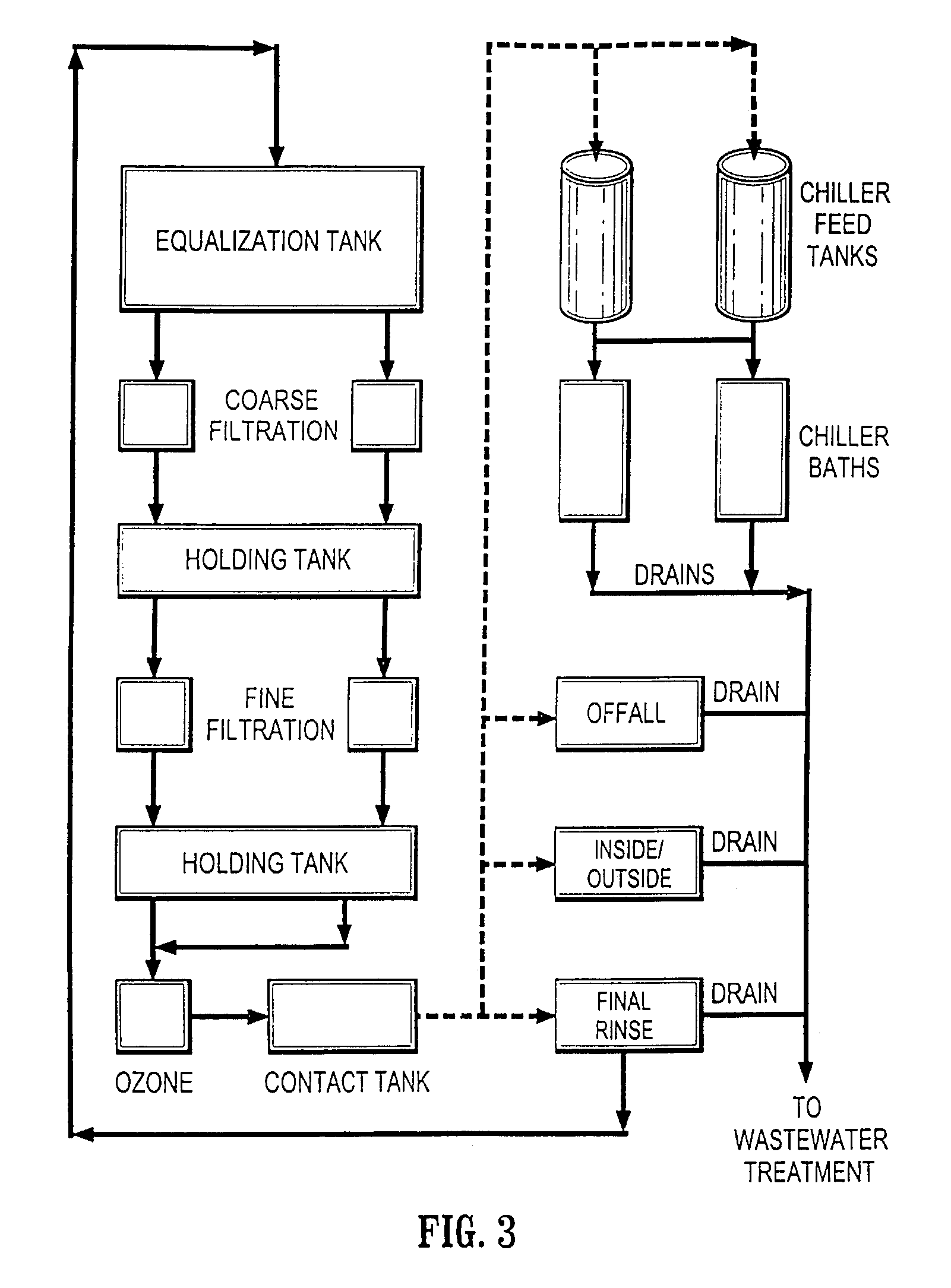Poultry processing water recovery and re-use process
a processing water and process technology, applied in the field of carcass processing, can solve the problems of large water consumption, high contamination burden, and inability to address critical economic restrictions inherent in poultry and other food processing operations, and achieve the effects of improving food safety, enhancing food safety, and efficient production process
- Summary
- Abstract
- Description
- Claims
- Application Information
AI Technical Summary
Benefits of technology
Problems solved by technology
Method used
Image
Examples
Embodiment Construction
[0038]The preferred embodiments of the apparatus and methods disclosed herein are discussed in terms of poultry processing water disinfection processes. It is envisioned, however, that the disclosure is applicable to a wide variety of processes including, but not limited to general carcass processing, etc. The following discussion includes an explanation of relevant terminology, a description of instrumentation employed for poultry processing and water disinfection, in accordance with the present disclosure, followed by a description of the preferred processes associated therewith.
[0039]A poultry processing line includes multiple processing steps. One step involves a poultry carcass being immersed in a chiller tank and is referred to as the “chilling step.” During the chilling step, temperature of the poultry carcass is cooled as a result of immersion in a cold water bath. The “chilling step” is significantly different from other processing steps such as scalding, picking, eviscerat...
PUM
| Property | Measurement | Unit |
|---|---|---|
| temperature | aaaaa | aaaaa |
| pH | aaaaa | aaaaa |
| pH | aaaaa | aaaaa |
Abstract
Description
Claims
Application Information
 Login to View More
Login to View More - R&D
- Intellectual Property
- Life Sciences
- Materials
- Tech Scout
- Unparalleled Data Quality
- Higher Quality Content
- 60% Fewer Hallucinations
Browse by: Latest US Patents, China's latest patents, Technical Efficacy Thesaurus, Application Domain, Technology Topic, Popular Technical Reports.
© 2025 PatSnap. All rights reserved.Legal|Privacy policy|Modern Slavery Act Transparency Statement|Sitemap|About US| Contact US: help@patsnap.com



